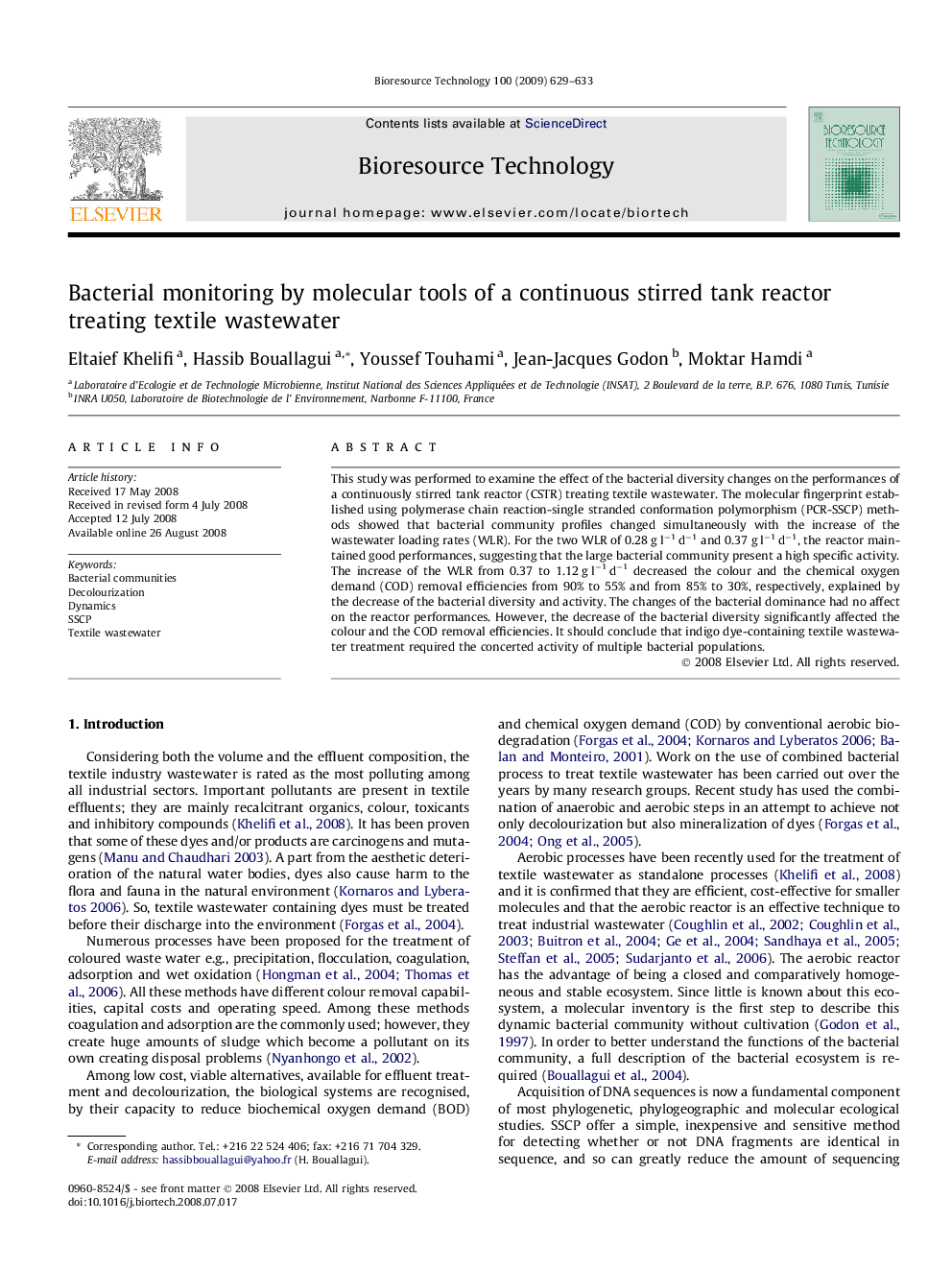| کد مقاله | کد نشریه | سال انتشار | مقاله انگلیسی | نسخه تمام متن |
|---|---|---|---|---|
| 683734 | 889006 | 2009 | 5 صفحه PDF | دانلود رایگان |

This study was performed to examine the effect of the bacterial diversity changes on the performances of a continuously stirred tank reactor (CSTR) treating textile wastewater. The molecular fingerprint established using polymerase chain reaction-single stranded conformation polymorphism (PCR-SSCP) methods showed that bacterial community profiles changed simultaneously with the increase of the wastewater loading rates (WLR). For the two WLR of 0.28 g l−1 d−1 and 0.37 g l−1 d−1, the reactor maintained good performances, suggesting that the large bacterial community present a high specific activity. The increase of the WLR from 0.37 to 1.12 g l−1 d−1 decreased the colour and the chemical oxygen demand (COD) removal efficiencies from 90% to 55% and from 85% to 30%, respectively, explained by the decrease of the bacterial diversity and activity. The changes of the bacterial dominance had no affect on the reactor performances. However, the decrease of the bacterial diversity significantly affected the colour and the COD removal efficiencies. It should conclude that indigo dye-containing textile wastewater treatment required the concerted activity of multiple bacterial populations.
Journal: Bioresource Technology - Volume 100, Issue 2, January 2009, Pages 629–633